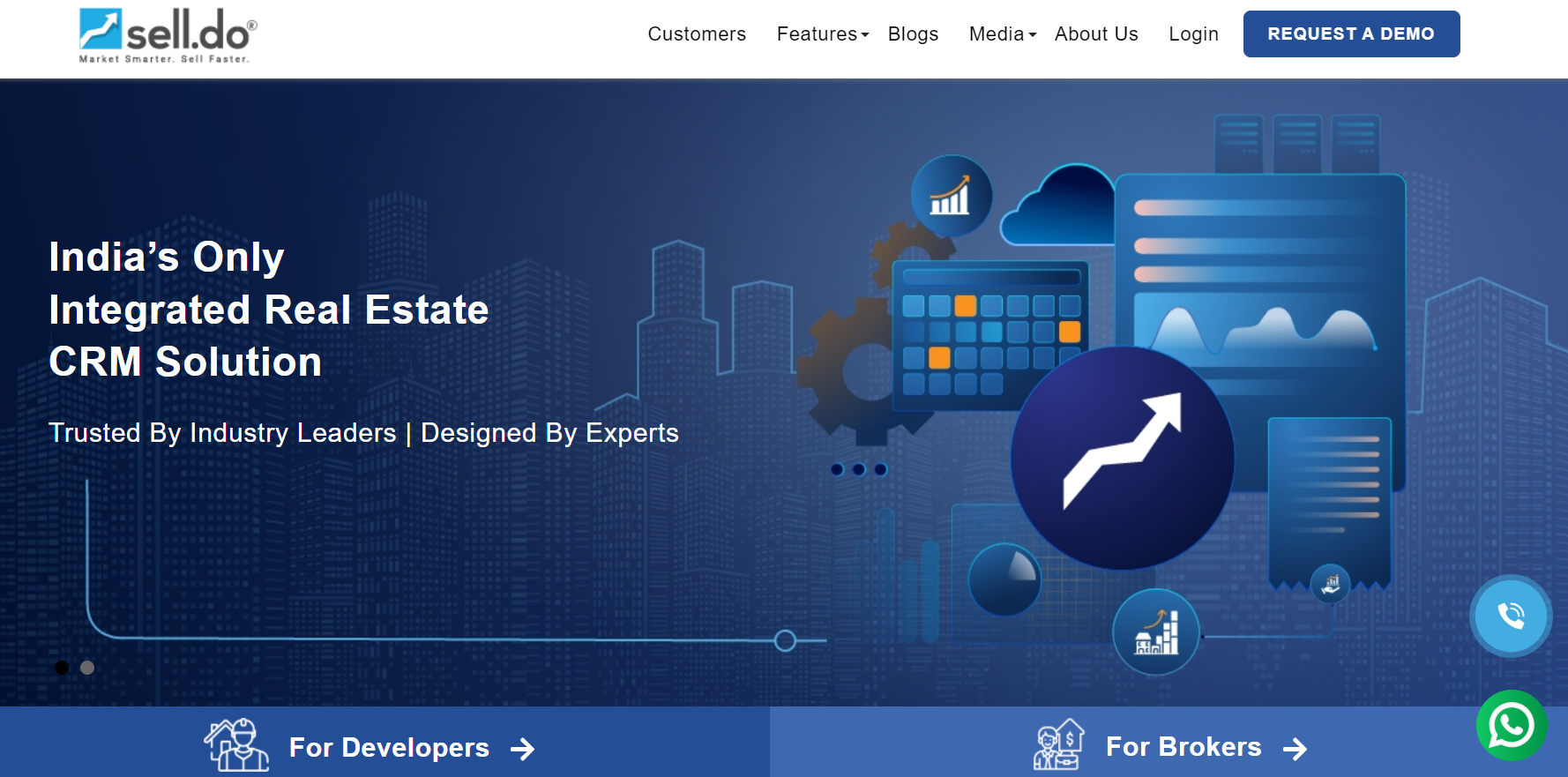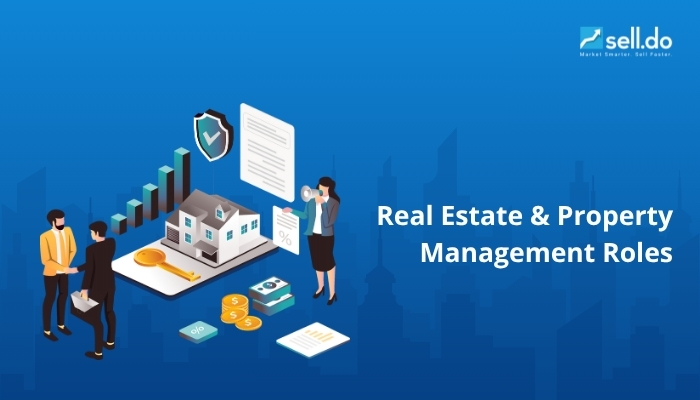People may not be house-hunting every day, but they still check their inboxes. That’s your chance. While blogs rely on search and social media is about chasing trends, newsletters meet your audience where they already are—with content they didn’t have to look for.
Sure, blogs still matter. However, real estate newsletters offer something more reliable in a space where attention is shrinking and algorithms constantly shift. They don’t just support your existing marketing—they strengthen it. They let you share timely updates, quick insights, or even personal perspectives that don’t need a full blog post.
And here’s the real value: you're not just promoting properties. You're building a relationship. Whether you're a broker, developer, or agent, a newsletter in 2025 gives you a direct, consistent line to people who may not be ready to buy today, but will remember you when they are.
In this guide, you'll get practical real estate newsletter ideas and examples, built for professionals starting from scratch or looking to create something more meaningful than a monthly mailer.
Understanding the Concept of Real Estate Newsletter
A real estate newsletter is a recurring email you send to your contacts—clients, prospects, investors, or partners—to share updates, insights, and helpful information. It’s not limited to listings or promotions. It can include anything from market trends and home-buying tips to behind-the-scenes stories from your projects.
Newsletters can become your dedicated communication channel—built to keep people engaged with your brand, even when they’re not actively looking to buy or invest. Unlike social media, which depends on visibility algorithms, newsletters land directly in inboxes. And unlike blogs, they don’t wait for someone to search—you send the value straight to them.
At its core, a real estate newsletter is about consistency, trust, and staying top-of-mind through content that actually matters to your audience.
Having explored what a real estate newsletter entails, it's now essential to understand how it can serve as a strategic asset in your marketing toolkit.
Also Read: Creative Real Estate Ad Examples and Marketing Ideas.
Benefits of a Real Estate Newsletter
Staying connected with your audience in real estate isn’t always about selling—it’s about staying relevant. People might not be ready to buy or invest every week, but they’ll remember the name that shows up with value. That’s where a real estate newsletter comes in. Unlike social media posts that can get buried in feeds, newsletters land directly in inboxes—personal, consistent, and distraction-free. They help you stay top-of-mind, not just with buyers and investors, but with past clients, future prospects, and partners who appreciate useful insights delivered straight to them.
More than just a marketing tool, a real estate newsletter is your chance to build credibility without sounding salesy. Whether you're sharing local market trends, homebuying tips, or quick project updates, you’re positioning yourself as a knowledgeable, reliable voice in the industry. And the numbers back it up—Campaign Monitor reports that marketing emails have an average open rate of 21.5%, and in real estate, click-through rates reach 3.6%. That’s proof that newsletters still work. They drive engagement, increase website traffic, and bring in qualified leads—all without relying on algorithms or spending heavily on ads.
Below are the key benefits of building a real estate newsletter:
- Keep your audience engaged: Real estate decisions aren’t made every day, but a newsletter helps you stay connected even when clients aren’t actively buying or selling.
- Builds credibility: Sharing useful, honest content regularly shows your expertise and commitment—without the hard sell. Over time, this builds real trust.
- Boosts listing visibility: Sharing useful, honest content regularly shows your expertise and commitment, without the hard sell. Over time, this builds real trust.
- Drives referrals: Clients who hear from you regularly are more likely to return for their next deal and recommend you when someone they know needs help.
- Nurtures leads: You can tailor content for buyers, sellers, investors, or tenants based on their stage, making your communication more relevant and timely.
- Strengthens marketing: Newsletters can work alongside your blog, website, and social media, driving traffic and amplifying content without much added effort.
- Delivers strong ROI: Compared to paid ads or large campaigns, email marketing is affordable, and with open and click rates still going strong, the ROI is hard to ignore.
With a solid understanding of the benefits a real estate newsletter brings, it's time to explore creative content ideas that can captivate your audience and keep them engaged.
Also, check our blog for innovative Real Estate Marketing Ideas and Trends for 2025.
8 Content Ideas for Real Estate Newsletters

If you're planning a newsletter that people will actually want to open, you need content that delivers value consistently. Not every edition needs to feature a property or push a sale. Some of the most effective newsletters offer practical insights, create a sense of community, or simply educate your audience in plain terms. Below are 8 long-term content ideas that do just that.
Local Events and Activities
Your audience might not be ready to buy this week—but they’re still living in or curious about the area. That’s where highlighting local events keeps you relevant. It helps you stay in their inbox in a friendly, useful way, not just as a seller. By sharing things to do nearby, your newsletter starts to feel more like a community update than a marketing email. Over time, that connection builds trust and familiarity.
You can use this to stay top-of-mind even when people aren’t actively searching.
- Feature weekend events, cultural programs, or seasonal festivals.
- Recommend cafés, parks, or hidden local gems people love.
- Collaborate with local businesses for promotions or shoutouts.
- Great for hyperlocal brokerages or developers with township projects.
Market Updates
Data drives decisions, and buyers love to feel informed, especially about high-stakes investments like real estate. Sharing market updates in your newsletter shows you actively follow trends and understand the terrain. More importantly, it saves your audience from having to search elsewhere. A well-presented update—monthly or quarterly—can become something your audience relies on to make decisions.
Such types of newsletters can be used to demonstrate authority and keep readers engaged with the market.
- Share city-level or micro-market price trends and movement.
- Summarize government policy changes or regulations affecting real estate.
- Add a short commentary to explain what it means for buyers or investors.
- Can be useful for all audience segments: buyers, investors, sellers, or even NRIs.
Home Buying and Selling Tips
For most people, buying or selling a home isn’t routine. It’s complex, emotional, and often overwhelming. That’s why practical, easy-to-follow advice goes a long way. Your newsletter can become a trusted guide through this journey—breaking the process into small, understandable pieces. This kind of helpful content builds lasting goodwill and positions you as someone who truly wants the best for your clients.
These types of real estate newsletters can be used to reduce anxiety around the home buying process, build trust, and encourage engagement.
- Share tips on legal paperwork, price negotiation, or home inspections.
- Include “what to avoid” lists based on real experiences.
- Offer seasonal guidance like “preparing your home for sale” or “monsoon-proofing your flat.”
- Perfect for first-time buyers, sellers, and people who’ve been out of the market for years.
Neighborhood Spotlights
People don’t just buy homes—they buy into a lifestyle. Neighborhood-focused content paints a clear picture of what life looks like in a certain location. This helps buyers imagine themselves living there and adds depth to listings. Spotlighting a neighborhood gives your newsletter a magazine-style touch, making it more engaging and visual. It’s also a smart way to highlight the value of newer or underappreciated areas.
You can use this to emotionally connect buyers with a location, not just a property.
- Include photos, local business shoutouts, school listings, or transportation options.
- Interview residents or feature testimonials about life in the area.
- Compare amenities across different neighborhoods.
- Especially helpful for people relocating from other cities or countries.
Client Success Stories
Real estate is personal—and people trust people. That’s why sharing stories of clients who had a positive experience with you or your business can be powerful. These stories add a human element to your newsletter, acting as subtle social proof. Whether someone found their dream home, got a great deal, or overcame challenges, their story might help others take the next step with confidence.
These newsletters can be used to build social proof and emotional credibility.
- Share short interviews, quotes, or before/after journeys.
- Highlight challenges solved, like tight budgets or urgent timelines.
- Add visuals or links to relevant listings (if still active).
- Works great for both residential and commercial real estate.
Recommended: Real Estate Agent Email Templates for Different Situations.
Property Investment Education
As property investment becomes more popular—even among younger generations—there’s a growing need for educational content that isn’t packed with jargon. Your newsletter can become a go-to source for investment know-how, giving long-term readers a reason to stay subscribed. This not only attracts serious leads but also positions you as a guide through the often confusing world of property returns.
If you intend to attract future investors and nurture leads over time, this is one of the best ideas you can implement.
- Explain concepts like capital appreciation, rental income, and ROI.
- Share long-term vs. short-term strategies with real examples.
- Create beginner-friendly guides or “property investment 101” content.
- Works well for NRIs, first-time investors, and even parents buying for kids.
Real Estate Terms Simplified
Most people don’t speak “real estate.” Legal terms, finance jargon, or industry acronyms can overwhelm your audience—leading them to delay decisions or seek help elsewhere. Explaining these terms simply, one or two per newsletter, adds real value. It also builds trust, because you’re making them feel smarter and more confident without trying to sell anything.
These newsletters can help attract a large audience and you can use this to reduce confusion and make the buying process easier.
- Define terms like RERA, carpet area, agreement value, stamp duty, etc.
- Use real-life scenarios or analogies to explain each concept.
- Create a glossary over time that your subscribers can save or bookmark.
- Appeals to both buyers and sellers, especially first-timers.
Finance Tips
Real estate and finance go hand-in-hand. Many deals are delayed or dropped due to financing issues—whether it’s loan eligibility, paperwork, or tax confusion. Offering useful finance tips shows you understand the full picture and care about your client’s success. This kind of content is practical and shareable, and it keeps you relevant even during the research or waiting phase.
Use this real estate newsletter to help leads make faster, more informed decisions.
- Share tips on improving credit scores, choosing the right loan, or planning EMIs.
- Break down mortgage jargon and tax-saving options.
- Invite a CA or loan expert to contribute once a quarter.
- Great for young buyers, salaried professionals, and middle-income segments.
Also, check our blog: Real Estate Landing Page Examples That Inspire and Convert.
Building upon the engaging content ideas we've explored, it's crucial to implement best practices that ensure your real estate newsletter not only captures attention but also fosters lasting client relationships.
Best Practices for Real Estate Newsletters

Sending a newsletter is easy—but sending one that people actually open, read, and act on takes strategy. Below are key best practices to help you create impactful newsletters that drive results, not just impressions.
Audience Segmentation and Personalization
Your audience isn’t one-size-fits-all. A first-time buyer, a seasoned investor, and a property seller all have different priorities, and your newsletter should reflect that. Personalizing your content makes it more relevant, more valuable, and ultimately more effective.
Best Practices:
- Segment your list based on buyer stage, interest (residential, commercial), geography, or past interactions.
- Tailor content for each group—for example, investment tips for long-term investors, or loan options for first-time buyers.
- Use subscriber data (e.g., location, behavior, website activity) to trigger personalized recommendations.
- Create email journeys—like a welcome series or post-visit follow-up—that speak directly to a user's intent.
- Always address readers by name and include personal touches to make emails feel human.
Design and Automation Best Practices
Your newsletter’s look and functionality matter just as much as the content. Clean, responsive design helps users stay engaged, while automation tools streamline delivery and improve consistency. Together, design and tech make your emails look professional and feel effortless.
Best Practices:
- Use a mobile-friendly design with a clear layout, scannable text, and optimized images.
- Stick to consistent branding—logo, fonts, brand colors, and voice should match your website and other channels.
- Include clear contact info and calls to action (CTAs), such as “Schedule a Site Visit” or “Call Us Today.”
- Set up automation for welcome emails, drip campaigns, or follow-ups after a property inquiry.
- Use scheduling tools to plan newsletters in advance and avoid last-minute rushes.
- Test your design across devices and platforms to ensure readability everywhere.
Monitoring and Improving Newsletter Performance
You can’t improve what you don’t measure. By regularly tracking performance metrics and testing elements of your newsletter, you’ll learn what works and what doesn’t—so you can keep refining your strategy and improving ROI.
Best Practices:
- Track open rates, click-through rates (CTR), bounce rates, and unsubscribes to measure engagement.
- Use A/B testing to compare subject lines, layouts, or content types and find what resonates best.
- Monitor heatmaps or click maps to see where users are engaging most within your email.
- Identify your best-performing content and repurpose or expand it into future newsletters.
- Send at optimal times based on subscriber behavior and time zones.
- Periodically clean your email list to remove inactive subscribers and improve deliverability.
Compliance and Deliverability
Even the best newsletter won’t help you if it lands in spam—or worse, violates email marketing laws. Ensuring compliance keeps your reputation intact and your emails hitting the inbox.
Best Practices:
- Include a visible unsubscribe option in every email.
- Follow GDPR or local data privacy laws when collecting and storing email addresses.
- Authenticate your emails with SPF, DKIM, and DMARC to improve deliverability.
- Avoid spammy subject lines (e.g., all caps, too many emojis, exaggerated claims).
- Maintain list hygiene by removing hard bounces and invalid emails regularly.
While newsletters play a pivotal role in engaging your audience, Sell.Do complements these efforts by capturing and nurturing leads across all your marketing channels, ensuring a seamless journey from interest to conversion.
Also read: Top CRM Software for Real Estate Developers in India
How Sell.Do Complements Your Real Estate Newsletter Strategy

While Sell.Do isn't designed for traditional newsletters; it serves as a powerful tool to complement your email marketing efforts. After distributing newsletters through your preferred email platform, you can import engaged subscribers into Sell.Do to segment and nurture them based on their interests and readiness to purchase. This approach allows for personalized communication, ensuring that potential buyers and investors receive timely and relevant information.
Designed specifically for the real estate industry, Sell.Do offers features that streamline the sales and marketing process. Its tools help in managing leads efficiently, automating marketing tasks, and providing insights into campaign performance, all tailored to the unique needs of real estate professionals.
Key Features of Sell.Do:
- Bulk Email Marketing: Send personalized emails to large groups, streamlining your outreach efforts.
- Drip Marketing Campaigns: Automate a series of emails to nurture leads over time, keeping your brand top-of-mind throughout the buyer's journey.
- Lead Scoring Based on Engagement: Assess lead quality by tracking email interactions, allowing your sales team to prioritize follow-ups effectively.
- Integrated Communication Tools: Utilize built-in email functionalities to send messages directly from the CRM, ensuring timely and relevant outreach.
- Comprehensive Analytics: Monitor email delivery, open rates, and click-through rates to evaluate the success of your campaigns and make data-driven decisions.
- Advanced Segmentation: Create detailed customer segments based on various attributes, enabling more personalized and effective marketing efforts.
- Quick Deployment: Get started with a fully functional system in as little as 7 days, with extensive onboarding support to ensure a smooth transition.
By integrating Sell.Do into your marketing strategy, you can transform your email outreach into a powerful tool for lead nurturing and conversion, tailored specifically to the real estate industry's demands.
Conclusion
A well-written real estate newsletter is more than just a communication tool; it's a strategic asset that keeps your audience informed and engaged. You establish trust and position yourself as a knowledgeable resource by consistently delivering valuable content, such as market updates, property insights, and homeownership tips. This ongoing engagement nurtures existing relationships and attracts potential clients, ultimately driving business growth.
To maximize the impact of your newsletters, implementing a CRM like Sell.Do can be transformative. Tailored specifically for the real estate industry, Sell.Do offers features that streamline lead management, automate marketing efforts, and provide actionable insights. By combining the informative nature of newsletters with Sell.Do's targeted communication capabilities, you can effectively nurture leads and drive conversions, ensuring your marketing efforts are both efficient and effective.
Contact us today for a demo and see what Sell.Do can do for you!






Leave a comment
Comments (0)
Be the first one to comment.